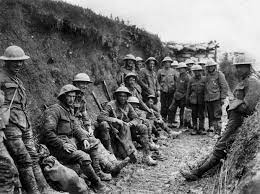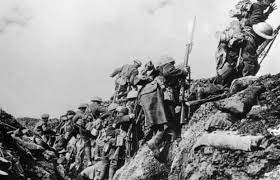Short History of World War 1
The Second Great War (WW1) otherwise called the First World War, was a worldwide conflict focused in Europe that started on 28th July 1914 and went on until eleventh November 1918. The conflict endured precisely four years, 90 days and 14 days. Before World War II started in 1939, World War I was known as the Great War, the World War or the War to End all Wars. 135 nations participated in World War I, and in excess of 15 million individuals passed on. See the reality record beneath for more data about World War I.
The Second Great War was a tactical struggle enduring from 1914 to 1918 which included practically every one of the greatest forces of the world. It included two restricting coalitions – the Allies and the Central Powers. The nations of the Allies included Russia, France, British Empire, Italy, United States, Japan, Rumania, Serbia, Belgium, Greece, Portugal and Montenegro. The nations of the Central Powers included Germany, Austria-Hungary, Turkey and Bulgaria.
The WW1 realities recorded on this page are stunning and extremely fascinating when you consider that the occasions occurred in exceptionally ongoing history.
WW1 Facts for Kids
The Second Great War set off on June 28, 1914. The Second Great War was set off on 28 June 1914 by the death of the Archduke Franz Ferdinand of Austria and his pregnant spouse Sophie. Archduke Franz Ferdinand of Austria was the nephew of Emperor Franz Josef and beneficiary to the seat of Austria and Hungary. The death was arranged by a Serbian fear based oppressor bunch, called The Black Hand and the one who shot Franz Ferdinand and his significant other was a Bosnian progressive named Gavrilo Princip.
An essential driver of WW1 was a distinction over international strategy. Albeit the death of Franz Ferdinand set off WW1, that was just the quick reason. Contrasts over international strategy between the significant world forces was the fundamental reason for the conflict.
WW1 had many causes:
A knot of coalitions made between nations, to keep an equilibrium power in Europe, which achieved the size of the contention.
The Bosnian Crisis where Austria-Hungary assumed control over the previous Turkish region of Bosnia in 1909 irritated Serbia.
Nations were building their tactical powers, arms and war vessels.
Nations needed to recapture lost domains from past clashes and construct realms.
The Moroccan Crisis where Germans were challenging the French ownership of Morocco.
The Second Great War was known by various names. Different names for World War 1 incorporate 'The War to End All Wars', The War of the Nations, WW1 and 'The Great War'.
The Americans joined World War 1 after 128 Americans were eliminated by a German submarine. In 1915, the British traveler taste Lusitania was sunk by a German submarine. On the whole, 1,195 travelers, including 128 Americans, lost their lives. Americans were offended and squeezed the U.S. government to enter the conflict. President Woodrow Wilson needed a quiet finish to the conflict, yet in 1917, when the Germans reported that their submarines would sink any boat that moved toward Britain, Wilson announced that America would enter the conflict and reestablish harmony to Europe. The United States entered the conflict on April 6, 1917.
8 million troopers kicked the bucket in WW1 and 21 million were harmed. 65 million soldiers were prepared during the conflict, 8 million soldiers kicked the bucket and 21 million soldiers were injured. 58,000 British troopers were lost on the principal day at the Battle of the Somme. Synthetic weapons were first utilized in World War I. The compound was mustard gas.
The United States just burned through seven and a half months in real battle. The U.S. was in the conflict in genuine battle for just seven and a half months during which time 116,000 were killed and 204,000 were injured. In the Battle of Verdun in 1916, there were over 1,000,000 losses in ten months.
By 1918, German residents were striking and showing against the conflict. The British naval force obstructed German ports, which implied that large number of Germans were starving and the economy was falling. Then, at that point the German naval force experienced a significant rebellion. After German Emperor Kaiser Wilhelm II surrendered on November ninth, 1918, the heads of the two sides met at Compiegne, France. The harmony cease-fire was endorsed on November eleventh. Before the finish of the conflict four domains — the Russian realm, the Ottoman domain, the German domain, and the Austro-Hungarian realm had fallen due to the conflict.
In 1919, The Treaty of Versailles authoritatively finished the WW1. The Treaty necessitated that Germany acknowledge full liability regarding causing the conflict; make restitutions to some Allied nations; give up a portion of its region to encompassing nations; give up its African provinces; and breaking point the size of its military. The Treaty additionally settled the League of Nations to forestall future conflicts. The League of Nations assisted Europe with reconstructing and 53 countries joined by 1923. Yet, the U.S. Senate wouldn't allow the United States to join the League of Nations, and therefore, President Wilson, who had set up the League, experienced an anxious breakdown and spent the remainder of his term as an invalid.
Germany joined the League of Nations in 1926, however numerous Germans were exceptionally angry of the Treaty of Versailles. Germany and Japan pulled out from the League of Nations in 1933. Italy pulled out three years after the fact. The League of Nations couldn't stop German, Italian, and Japanese from extending their force and taking over more modest nations. Many trust World War I never truly finished, and that World War II could never have occurred notwithstanding WW1.
Additional Interesting Facts about WW1
A blast on the front line in France was heard in England. A large portion of World War One was battled in mud and channels, yet a gathering of excavators would likewise burrowed underground passages and explode mines behind the foe's channels. In Messines Ridge in Belgium, these diggers exploded over 900,000lbs of explosives simultaneously, annihilating the German cutting edge. The blast was so noisy and incredible that it was heard by the British Prime Minister David Lloyd George – 140 miles away in Downing Street.
WW1 writers took a chance with their lives to provide details regarding the conflict. The Government attempted to control the progression of data from the bleeding edge during the conflict and writers were prohibited from announcing. The War Office thought about covering the conflict as aiding the adversary and in case writers were gotten, the confronted capital punishment. A modest bunch of writers took a chance with their lives to cover the conflict and the unforgiving real factors that the warriors confronted.
12 million letters were conveyed to the forefront consistently. In any event, during seasons of war, it just required two days for a letter to be conveyed from Britain to France. A reason constructed mail arranging office was made in Regent's Park before the letters were shipped off the channels on the forefront. When the conflict finished, more than two billion letters and 114 million packages had been conveyed to the channels!
Plastic medical procedure was concocted as a result of WW1. Perhaps the soonest illustration of plastic medical procedure came during World War I when a specialist by the name of Harold Gillies assisted shrapnel casualties with horrible facial wounds. Shrapnel caused numerous facial wounds in WW1 and the bent metal would deliver far more awful wounds than the straight-line injuries of a projectile. Dr Gillies spearheaded the early strategies for facial reproduction.
The most youthful British warrior in WW1 was only 12 years of age. More than 250,000 underage officers were permitted to battle in World War 1. The most youthful was a kid named Sidney Lewis who was only 12 years of age yet lied about his age to join. There were a huge number of underage young men who enrolled and most lied about their age. Some joined for the love of their nation, while others did it to escape from the daily routines and the helpless conditions they experienced in.
Blood donation centers were created during World War I. It was during WW1 that the normal utilization of blood bonding was utilized to treat injured officers. Blood was moved straightforwardly starting with one individual then onto the next. In 1917, a US Army specialist by the name of Captain Oswald Johnson set up the main blood donation center on the Western Front. He utilized sodium citrate the keep the blood from coagulating and becoming unusable. The blood was kept on ice for up to 28 days and was moved when expected to setback clearing stations for use in life-saving a medical procedure on troopers who had lost a ton of blood.
9 out of 10 British troopers endure the channels. English patches were seldom in the terminating line in WW1. They moved around the channel framework continually and were generally kept from the risks of foe fire. Most British troopers life in World War I would have ordinary everyday practice and fatigue.
Armed force officers must be restricted from going 'over the top'. One normal generalization is that customary patches were utilized by the higher ups – lions drove by jackasses as the platitude goes. The jackasses being the uncouth commanders who didn't invest any energy on the forefront while a large number of binds – the lions – were killed. As a matter of fact, so many British commanders needed to battle and they must be prohibited from going over the top since they were being killed and the experience of a general was too essential to even consider losing.


No comments:
Post a Comment